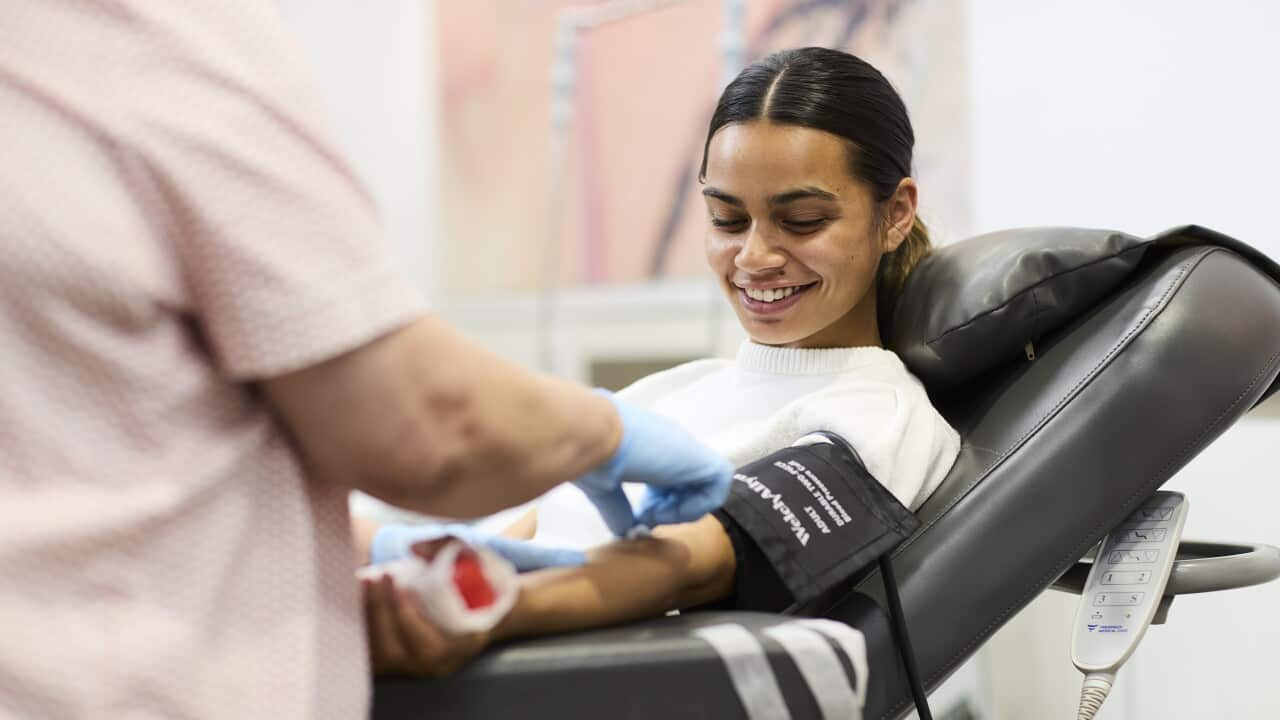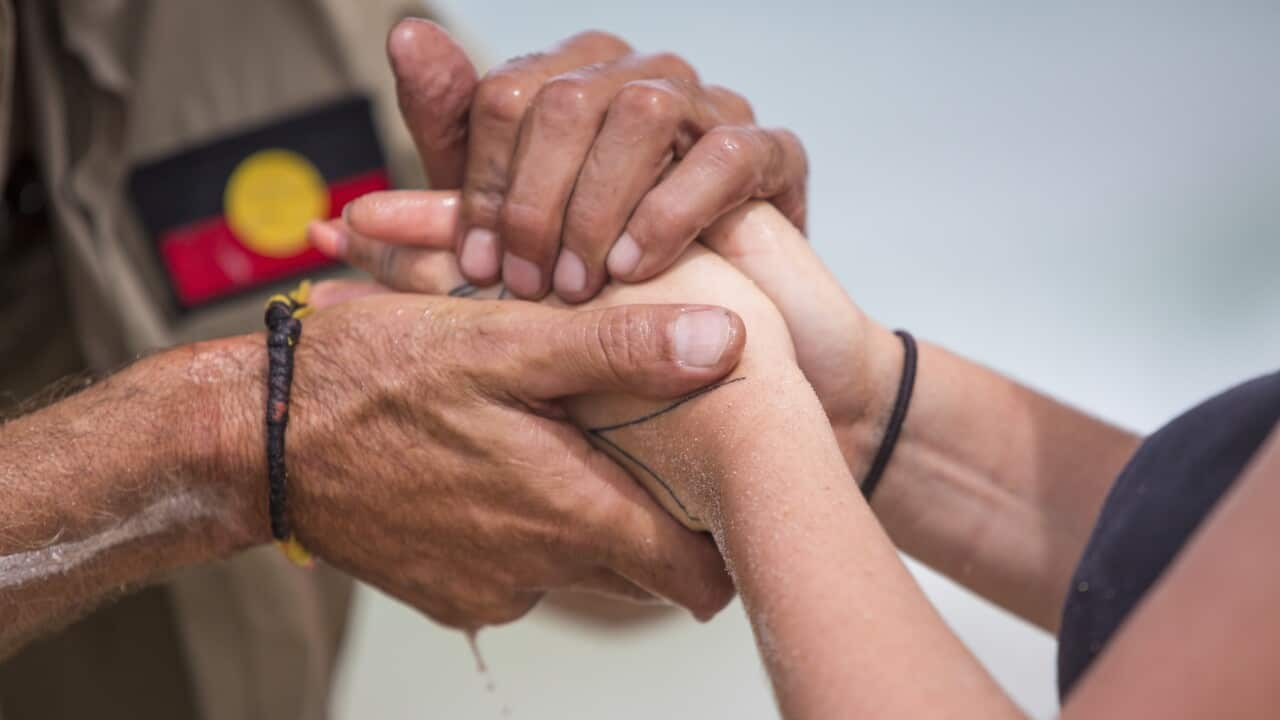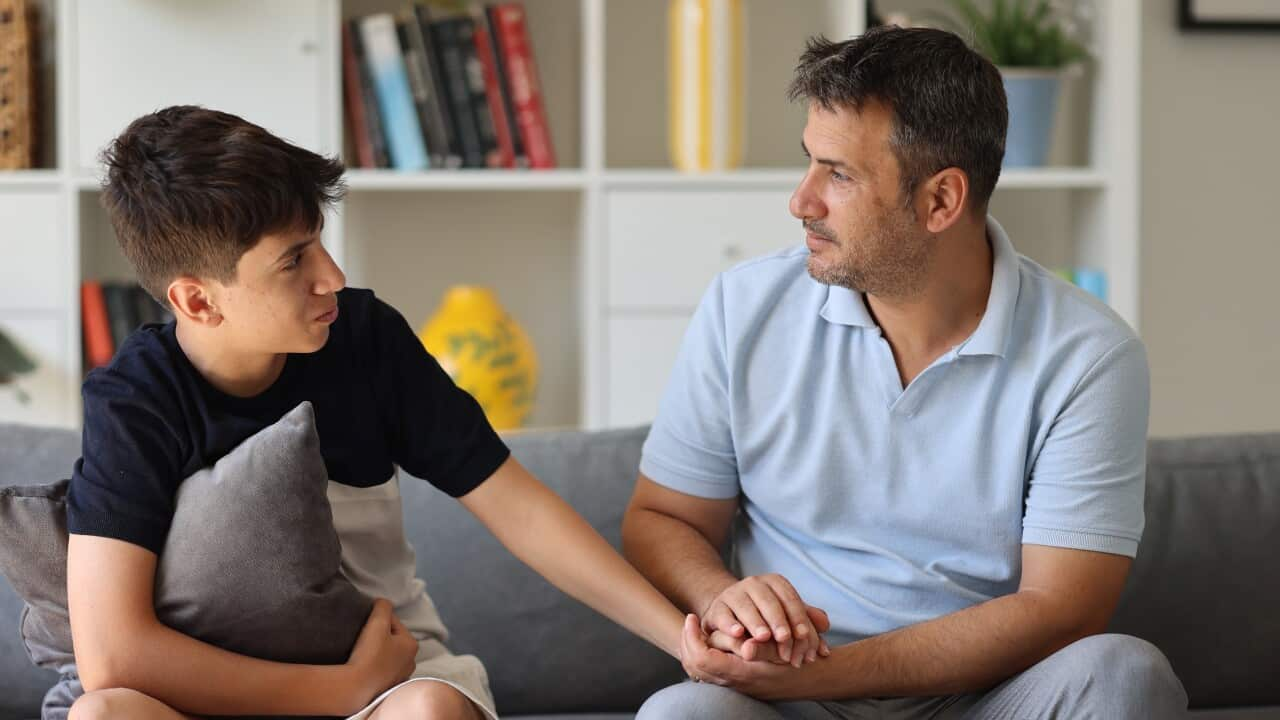Key Points
- خون کا عطیہ دینا رضاکارانہ عمل ہے۔
- آسٹریلوی ریڈ کراس لائف بلڈ خون کی عطیات کا انتظام کرتا ہے۔
- لائف بلڈ کو آسٹریلیا کی متنوع آبادی سے ملانے کے لیے ہر پس منظر سے خون کے عطیات کی ضرورت ہوتی ہے۔
- اگر آپ کو غیر یقینی لگتا ہے کہ آیا آپ عطیہ دے سکتے ہیں، تو آپ لائف بلڈ ہاٹ لائن 13 14 95 پر کال کر سکتے ہیں۔
- عطیہ شدہ خون کس لیے استعمال ہوتا ہے؟
- کیا کوئی بھی خون کا عطیہ دے سکتا ہے؟
- کسی کو خون عطیہ کرنے کے لیے کیا ترغیب دی جائے؟
- خون کے عطیہ کے اپوائنمنٹس کے دوران میں کیا توقع کر سکتا ہوں؟
- ہمیں متنوع پس منظر کے افراد سے خون کے عطیات کی ضرورت کیوں ہے؟
- کیا آپ گروپ کے طور پر خون کا عطیہ دے سکتے ہیں؟
- آپ خون کا عطیہ کہاں کرتے ہیں؟
آسٹریلیا کے پاس دنیا میں سب سے محفوظ خون کی سپلائی ہے، لیکن عام طور پر یہ سپلائی ہمیشہ کم رہتی ہے۔ ہمیں اپنے ہسپتال کے مریضوں کے مطالبات کو پورا کرنے کے لیے ہر ہفتے 33,000 سے زیادہ خون کے عطیات کی ضرورت ہوتی ہے۔
عطیہ شدہ خون کس لیے استعمال ہوتا ہے؟
آسٹریلین ریڈ کراس کے حصے کے طور پر ہماری خون کی فراہمی کا انتظام کرنے والی سرکاری مالی امداد سے چلنے والی لائف بلڈ کی ترجمان ایملی گرانلینڈ کہتی ہیں کہ خون ایک بہت ہی کار آمد مصنوعات میں شامل ہے اور ایک قیمتی وسیلہ ہے جو ان لوگوں کے لیے زندگی بدل دیتا ہے جنہیں اس کی ضرورت ہوتی ہے۔
"یہ ہنگامی حالات میں زندگیاں بچا سکتا ہے۔ یہ کینسر جیسے موزی امراض کا علاج کروانے والے لوگوں کی زندگی کو طول دے سکتا ہے، اور یہ ان لوگوں کو زندگی کا بہتر معیار فراہم کر سکتا ہے جنہیں باقاعدگی سے خون کی منتقلی کی ضرورت ہوتی ہے۔ اور خون کا عطیہ درحقیقت بہت سے لوگوں کی مدد کرتا ہے: وہ لوگ جو سرجری سے گزر رہے ہیں، وہ لوگ جو کسی سنگین حادثے کا شکار ہیں، خون یا مدافعتی امراض کے حامل افراد، زچگی میں خون کی کمی کا شکار خواتین اور یہاں تک کہ وہ بچے بھی جو ابھی پیدا بھی نہیں ہوئے۔‘‘
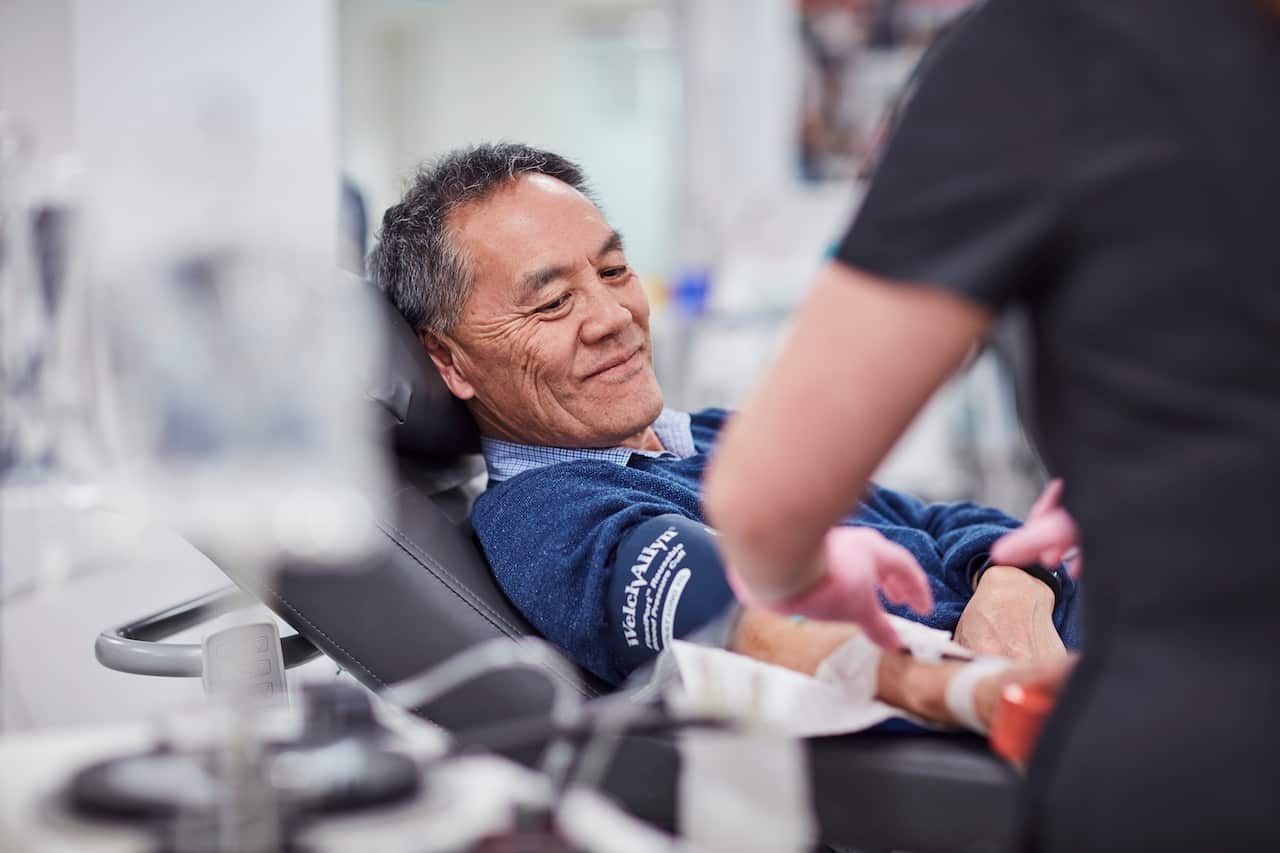
Lifeblood needs blood donations from all backgrounds to match Australia’s diverse population.
کیا کوئی بھی خون کا عطیہ دے سکتا ہے؟
ہر کوئی ہر وقت خون کا عطیہ نہیں دے سکتا۔ لیکن ہم میں سے زیادہ تر افراد اپنے خون کے کچھ حصے عطیہ کر سکتے ہیں—اور اکثر آپ اتنی باقاعدگی سے خون عطیات کر سکتے ہیں جتنا آپ سوچ بھی نہیں سکتے۔
مس گرانلینڈ کہتی ہیں، "اگر آپ کی عمر 18 سے 75 سال کے درمیان ہے، آپ کا وزن 50 کلو یا اس سے زیادہ ہے اور آپ تندرست اور صحت مند محسوس کر رہے ہیں، تو آپ کو عطیہ دینا قابل ہونا چاہیے۔"
"لائف بلڈ بھی پلازما اور پلیٹلیٹ عطیات اکٹھے کرتا ہے، اور یہ ہمارے خون کے مختلف حصے ہیں۔ اور آپ آسٹریلیا میں ہر 12 ہفتوں میں خون عطیہ کر سکتے ہیں، جبکہ پلازما کا ہر دو ہفتوں کے بعد عطیہ کر سکتے ہیں۔"
کچھ حالات کے باعث آپ ڈونر کے طور پر مسترد ہو سکتے ہیں۔ مثال کے طور پر اگر آپ حاملہ ہیں تو آپ عطیہ نہیں کر سکتیں، یا اگر آپ کو فالج کا دورہ پڑا ہے یا کوئی دوسری طبی حالت ہے۔ یہ آپ کی صحت کی حفاظت کے لیے ہے۔
خون کے امراض جیسے ہیموفیلیا اور تھیلیسیمیا بھی آپ کو نااہل بنا سکتے ہیں۔
اگر آپ کو یقین نہیں ہے کہ آپ خون کا عطیہ کر سکتے ہیں یا نہیں، تو آپ لائف بلڈ ہاٹ لائن کو 13 14 95 پر کال کر سکتے ہیں۔ طبی ٹیم آپ کے حالات پر بات کرنے میں خوش ہے۔
شروع کرنے کے لیے، آپ لائف بلڈ اہلیتی کوئز بھی لے سکتے ہیں۔
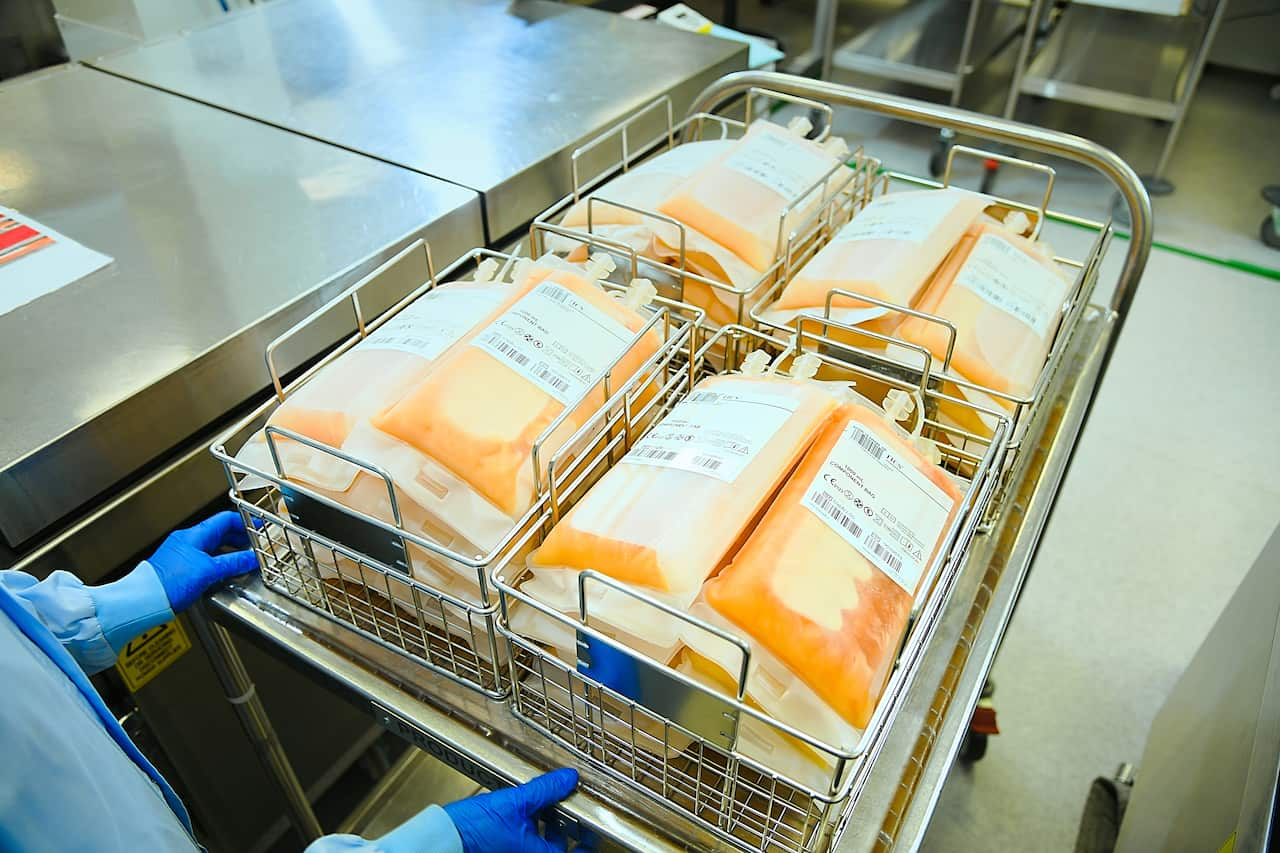
Frozen plasma in trolley - If you’re unsure whether you can donate, you can call the Lifeblood hotline on 13 14 95. Credit: /
کسی کو خون عطیہ کرنے کے لیے کیا ترغیب دی جائے؟
خون عطیہ کرنے والے ایڈ نے 2009 سے لے کر ہر سال تین سے چار بار خون دیا ہے۔
وہ کہتے ہیں کہ اگرچہ بہت سے لوگ ہمارے خون کی فراہمی کو معمولی سمجھتے ہیں، لیکن کسی کے لیے یہ زندگی یا موت کا مسئلہ ہو سکتا ہے۔
"میری ترغیب واقعی زندگی بچانے کا جذبہ ہے۔ تو میرے لیے یہ کچھ ایسا ہے جس میں میں مدد کر سکتا ہوں اور اس میں میرے وقت کے علاوہ کچھ نہیں لگتا... یا میرا خون۔"
میری فیملی اور دوستوں میں سے کچھ افراد اسپتال جا چکے ہیں، خون کی منتقلی سے گزر چکے ہیں اور مجھے لگتا ہے کہ مجھے کمیونٹی کو کچھ واپس دینا چاہیے۔Ed, regular donor
خون کے عطیہ کے اپوائنمنٹس کے دوران میں کیا توقع کر سکتا ہوں؟
خون کے عطیہ کے لیے وقت تقریباً ایک گھنٹہ لگے گا جبکہ پلازما کے لیے یہ 90 منٹ تک ہو سکتا ہے۔ آپ کے بازو سے چند منٹ میں سوئی کے ذریعے خون نکالا جائے گا۔
مس گرانلینڈ مشورہ دیتی ہیں: "ہم درخواست کرتے ہیں کہ آپ عطیہ سے ایک دن پہلے تقریباً 12 گلاس پانی پییں، اور عطیہ کے دن بھی پانی پینا جاری رکھیں تاکہ آپ ہائیڈریٹڈ رہیں اور آپ کا خون اچھی روانی سے بہے۔"
"ہم جانتے ہیں کہ کچھ لوگ خون عطیہ کرتے وقت تھوڑا سا نروس محسوس کرتے ہیں یا سوئیوں سے ڈرتے ہیں، لیکن ہمارا عملہ بہت ہی دوستانہ ہے اور آپ کو پر سکون رکھنے کی کوشش کرے گا"
"اگر انگریزی آپ کی پہلی زبان نہیں ہے، تو ہم مترجم فراہم کر سکتے ہیں۔ ہم اسکرینز اور بازو کور بھی مہیا کر سکتے ہیں۔"
آپ کو ایک سوالنامہ مکمل کرنے کے لیے کہا جائے گا تاکہ یہ یقینی بنایا جا سکے کہ آپ اس دن عطیہ کرنے کے اہل ہیں، اور اپنے بلڈ پریشر اور آئرن کی سطح کی فوری جانچ کروائیں۔
"پھر آپ ہمارے ڈونر فلور پر جائیں اور اپنا عطیہ دینے کے لیے ایک اچھی آرام دہ کرسی پر بیٹھیں،" محترمہ گرانلینڈ کہتی ہیں۔ "اور خون کا عطیہ دیں جس میں صرف پانچ سے 10 منٹ لگتے ہیں۔"
اس کے بعد، آپ کو اپنی توانائی دوبارہ فراہم کرنے کے لیے کچھ مفت ریفریشمنٹس کے ساتھ آرام کرنے کی دعوت دی جاتی ہے۔
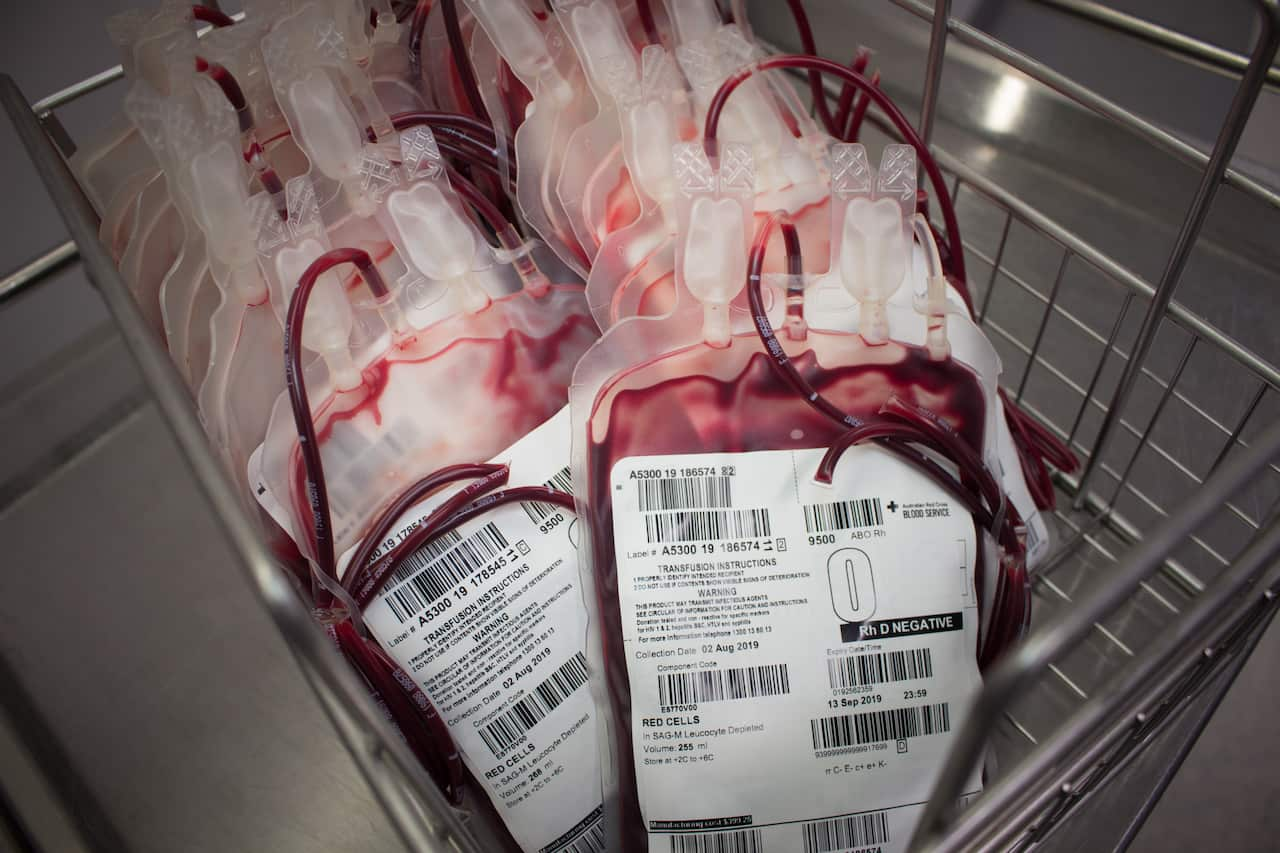
O-negative blood - Not everyone can donate blood regularly. But most of us can donate at least some parts of our blood.
ہمیں متنوع پس منظر کے افراد سے خون کے عطیات کی ضرورت کیوں ہے؟
آسٹریلیا میں، یہ ضروری ہے کہ خون آبادی کے متنوع حصے سے عطیہ کیا جائے۔
ڈاکٹر ریچل تھورپ کا کہنا ہے کہ فی الحال، خون کے عطیہ کرنے والے زیادہ ترافراد کا تعلق یورپی پس منظر سے ہیں۔ وہ آسٹریلین ریڈ کراس لائف بلڈ کے ساتھ سینئر ریسرچ فیلو ہیں۔
تاہم ان کا کہنا ہے کہ متنوع پس منظر کے افراد جتنا زیادہ خون کے عطیات فراہم کنندہ بنتے جائیں گے، ہماری خون کی فراہمی اتنی ہی پائیدار ہوتی جائے گی۔
جیسا کہ ملک نسلی طور پر متنوع ہوتا جاتا ہے، اسی طرح ہمارا خون بھی، کیونکہ خون کی اقسام وراثت میں ملتی ہیں۔ لہٰذا یہ واقعی اہم ہے کہ ہم آبادی کے متنوع حصے سے خون کے عطیات وصول کریں تاکہ ہمارے پاس خون کا مماثل ہو جو ان مریضوں کے لیے دستیاب ہے جنہیں اس کی ضرورت ہے۔Dr Rachel Thorpe
آٹھ اہم خون کی اقسام ہیں۔ آپ میں سے بیشتر نے اے بی او اور آر ایچ خون کی اقسام کے بارے میں سنا ہوگا۔ مثال کے طور پر، آپ شاید پہلے سے جانتے ہوں کہ آپ کی خون کی قسم ایک حرف اے ، بی ، او یا دو حروف اے بی اور مزید ایک قسم آر ایچ کی منفی یا مثبت اقسام ہوتی ہیں ۔
آسٹریلیا میں، سب سے عام خون کی قسم او پوزیٹیو ہے جس کے بعد اے پوزیٹیو کا نمبر آتا ہے۔۔
ڈاکٹر تھورپ کہتی ہیں کہ درحقیقت 300 سے زیادہ اقسام موجود ہیں، جن میں سے کچھ بہت نایاب ہیں، جیسے جے کے نل' خون کی قسم۔
’’یہ تمام نسلوں میں نایاب ہے لیکن پولینیسی، نیوزی لینڈ ماؤری اور فلپینی پس منظر کے لوگوں میں یہ زیادہ عام ہے۔ لہذا ہم ہمیشہ ان پس منظر کے لوگوں کو خون دینے کے لئے مدعو کرتے ہیں۔‘‘
ثقافتی عوامل اثر انداز ہو سکتے ہیں کہ کیوں بعض اوقات لوگ خون دینے سے ہچکچاتے ہیں۔ کچھ ممالک میں، مثال کے طور پر، خاندان کے رکن یا دوست کو عزیز کے لئے خون دینے کے لئے کہا جاتا ہے۔ اس کے برعکس، یہاں خون کا عطیہ دینا رضاکارانہ ہے۔
کیا آپ گروپ کی شکل میں خون کا عطیہ دے سکتے ہیں؟
جی ہاں، آپ دے سکتے ہیں۔ ممکن ہے کہ آپ کی ورک پلیس گروپ اپوائنٹمنٹ کا بندوبست بھی کرے۔
ریگولر خون دینے والے ایڈ نے اپنے کولیگز کے ساتھ گروپ اپوائنٹمنٹ کی ، تاکہ وہ خود کو اور دوسروں کو خون دینے کے لیے ترغیب دے سکیں۔
"جب آپ گروپ کی شکل میں وہاں جاتے ہیں اور خون کے مرکز کی طرف جاتے ہوئے ایک خوشگوار ماحول ہوتا ہے، تو یہ ان لوگوں کے لیے بھی آسانی پیدا کرتا ہے جو شاید سوئیوں کے خوف وغیرہ کی وجہ سے خون عطیہ کرنے میں زیادہ دلچسپی نہیں رکھتے۔"
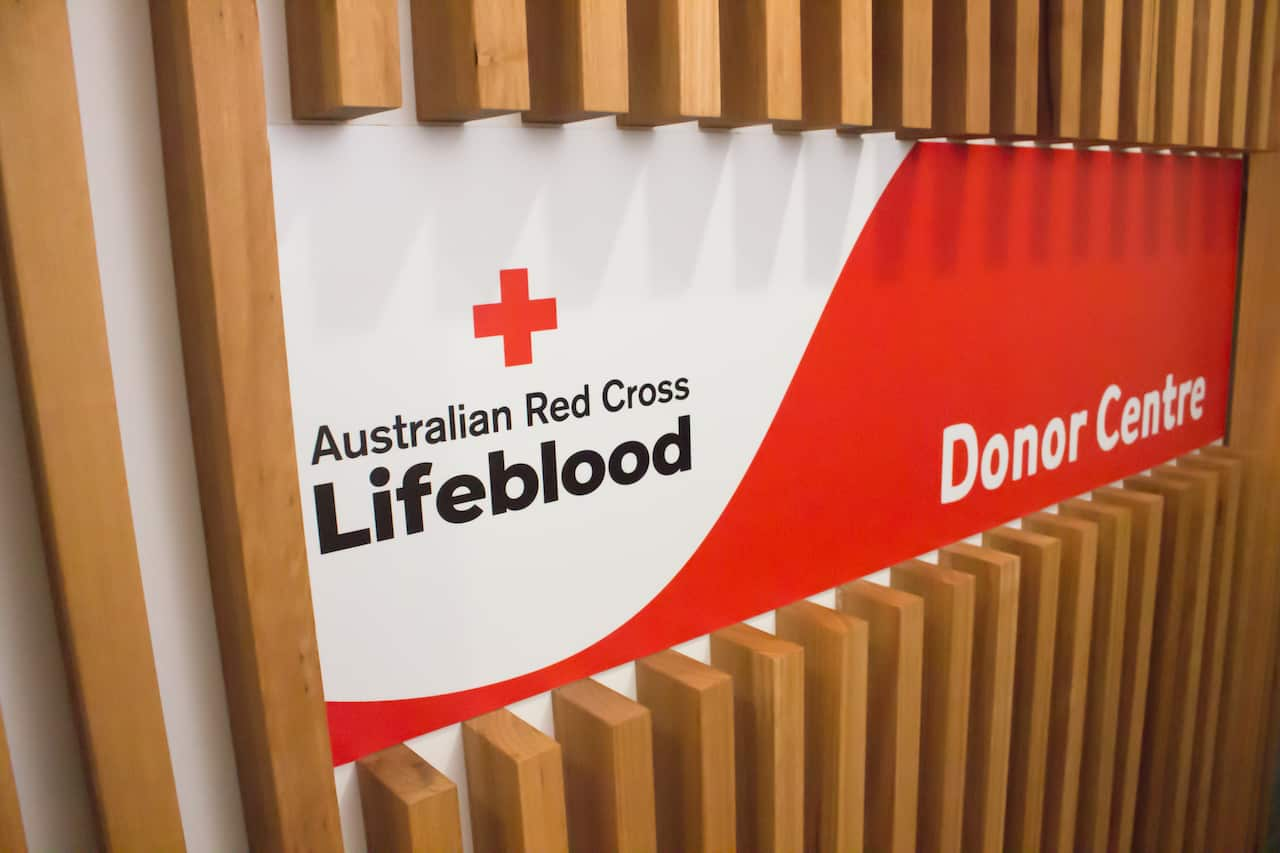
Australian Red Cross Lifeblood Donor Centre.
Where do you donate blood
آپ خون کہاں عطیہ کرسکتے ہیں؟
لائف بلڈ ہمیشہ تمام پس منظر کے نئے عطیہ دہندگان کا خیرمقدم کرتا ہے۔
بکنگ کی سفارش کی جاتی ہے، لیکن عطیہ دہندہ مراکز بغیر اپائنٹمنٹ کے آنے والے لوگوں کے لئے انتظام کرنے کی کوشش کرتے ہیں۔
آسٹریلیا بھر میں لائف بلڈ کے تقریباً 80 دائمی عطیہ دہندہ مراکز ہیں۔ پاپ اپ عطیہ دہندہ مراکز اور موبائل عطیہ دہندہ یونٹس ہر سال 365 سے زیادہ علاقائی مقامات کا دورہ کرتے ہیں۔
اگر آپ خون عطیہ کرنے کی کوشش کرنا چاہتے ہیں تو آپ 13 14 95 پر کال کر سکتے ہیں یا lifeblood.com.au پر یا ڈونیٹ بلڈ ایپ کے ذریعے آن لائن بک کر سکتے ہیں۔
Subscribe to or follow the Australia Explained podcast for more valuable information and tips about settling into your new life in Australia.
Do you have any questions or topic ideas? Send us an email to australiaexplained@sbs.com.au
___
جانئے کس طرح ایس بی ایس اردو کے مرکزی صفحے کو بُک مارک کریں ہر بدھ اور جمعہ کا پورا پروگرام اس لنک پرسنئے, اردو پرگرام سننے کے دیگر طریقے, “SBS Audio”کےنام سےموجود ہماری موبائیل ایپ ایپیل (آئی فون) یااینڈرائیڈ , ڈیوائیسزپرانسٹال کیجئے۔
